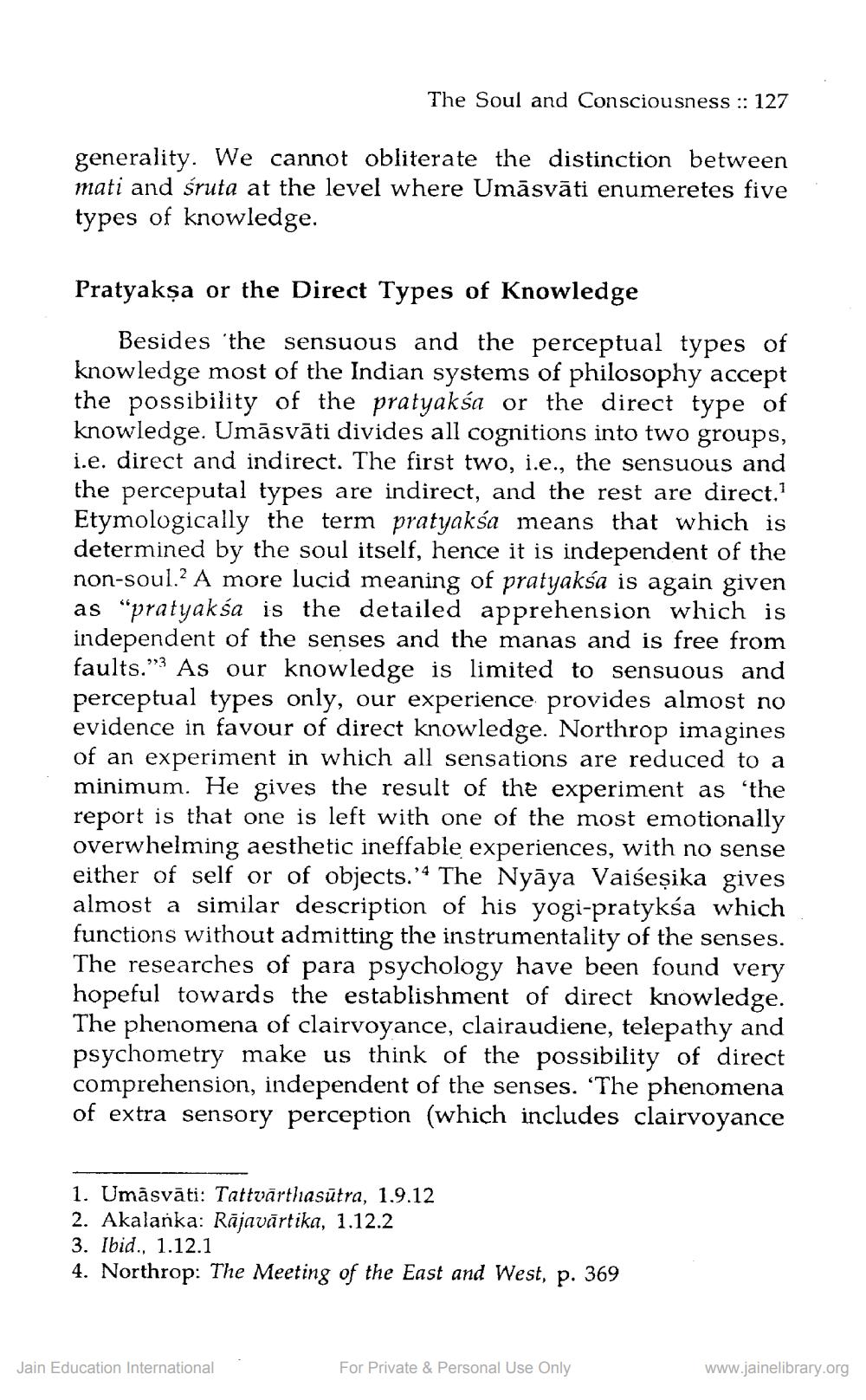________________
The Soul and Consciousness :: 127
generality. We cannot obliterate the distinction between mati and śruta at the level where Umāsvāti enumeretes five types of knowledge.
Pratyakṣa or the Direct Types of Knowledge
Besides the sensuous and the perceptual types of knowledge most of the Indian systems of philosophy accept the possibility of the pratyaksa or the direct type of knowledge. Umāsvāti divides all cognitions into two groups, i.e. direct and indirect. The first two, i.e., the sensuous and the perceputal types are indirect, and the rest are direct.1 Etymologically the term pratyaksa means that which is determined by the soul itself, hence it is independent of the non-soul. A more lucid meaning of pratyaksa is again given as "pratyaksa is the detailed apprehension which is independent of the senses and the manas and is free from faults." As our knowledge is limited to sensuous and perceptual types only, our experience provides almost no evidence in favour of direct knowledge. Northrop imagines of an experiment in which all sensations are reduced to a minimum. He gives the result of the experiment as 'the report is that one is left with one of the most emotionally overwhelming aesthetic ineffable experiences, with no sense either of self or of objects.'4 The Nyaya Vaiseṣika gives almost a similar description of his yogi-pratyka which functions without admitting the instrumentality of the senses. The researches of para psychology have been found very hopeful towards the establishment of direct knowledge. The phenomena of clairvoyance, clairaudiene, telepathy and psychometry make us think of the possibility of direct comprehension, independent of the senses. 'The phenomena of extra sensory perception (which includes clairvoyance
1. Umäsvāti: Tattvärthasutra, 1.9.12
2. Akalanka: Rājavārtika, 1.12.2
3. Ibid., 1.12.1
4. Northrop: The Meeting of the East and West, p. 369
Jain Education International
For Private & Personal Use Only
www.jainelibrary.org




